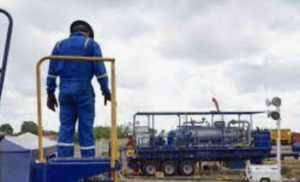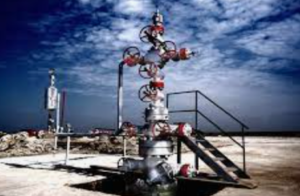Pioneer Natural Resources Co. has boosted its output capacity as the Permian major works to complete its acquisition by Exxon Mobil Corp.
Oil & Gas Data Download
Pioneer Resources Wells Drilled in 2023
“Pioneer continued to deliver strong operational performance in the Midland Basin, which led to the Company placing 482 horizontal wells on production during 2023, including 135 horizontal wells placed on production during the fourth quarter”, the oil and gas exploration and production company said in an earnings news release referring to a sub-basin of the Permian basin.
Dallas, Texas-based Pioneer highlighted over 125 of the wells had lateral lengths of 15,000 feet or longer providing “significant capital savings on a per foot basis and is expected to generate an internal rate of return that is on average 35 percent higher than a comparable 10,000-foot lateral well”.

Pioneer added it has more than 1,000 wells with 15,000-foot lateral lengths that are on its drilling inventory.
“During 2023, Pioneer’s operational teams delivered a sixth consecutive year of improved drilling and completions efficiencies”, it said. “Extended laterals, utilization of simulfrac fleets and the transition of completions fleets from diesel-only fuel are a few examples of the many continuous improvement efforts that the Company’s operational teams continue to progress”.
Pioneer said that last year it transitioned all its completion fleets to either electric or dual-fuel.
It produced 715,000 barrels of oil equivalent per day (boepd) in 2023, including 372,000 bopd of oil, as well as raised its proved reserves by 397 million boe to 2.5 billion boe as of yearend.
This year Pioneer expects to grow production to between 750,000 boepd and 766 boepd, of which 384,000 bopd to 392,000 bopd are oil.
Pioneer’s production growth—in 2021 and 2022 it also added around 500 wells annually to its producing assets—bodes well for ExxonMobil, which is expected to consummate its acquisition of the former by June.
The U.S. competition regulator has launched an investigation into the $64.5 billion transaction, Pioneer said in a regulatory disclosure December 5, expressing confidence the acquisition will conclude by mid-2024 as planned.
On November 1 a group of senators wrote to the Federal Trade Commission (FTC) asking for a probe into the agreed mergers between Exxon Mobil and Pioneer, and Chevron Corp. and Hess Corp. They warned the moves would harm competition, risk raising oil and gas prices and reduce domestic output.
Announcing the deal for the all-stock purchase October 11, ExxonMobil said absorbing Pioneer would raise its Permian reserves to 16 billion boe. “The merger combines Pioneer’s more than 850,000 net acres in the Midland Basin with ExxonMobil’s 570,000 net acres in the Delaware and Midland Basins, creating the industry’s leading high-quality undeveloped U.S. unconventional inventory position”, it said in a press release at the time.
The transaction value consists of $59.5 billion for Pioneer stocks, or $253 per share, and net debt.
Pioneer exited 2023 with $4,6 billion in net debt, while its liquidity totaled $2.2 billion including $240 million cash on hand. Current assets—assets convertible into cash within a year—stood at $2.6 billion, compared to $3 billion in current liabilities.
It logged $4.9 billion in net profit, or $20.21 per share assuming dilution. Despite higher production that was down from $7.8 billion 2022 as global oil and gas prices fell after exceptional highs.
Operating activities in 2023 generated $8.4 billion in cash for Pioneer, while costs and expenses came at $13 billion.
It returned $3.9 billion to shareholders through dividends and buybacks. For the first quarter of 2024 Pioneer declared a dividend of $2.56 per unit, representing an annualized yield of 4.4 percent.
Oil & Gas Contact Lists

















